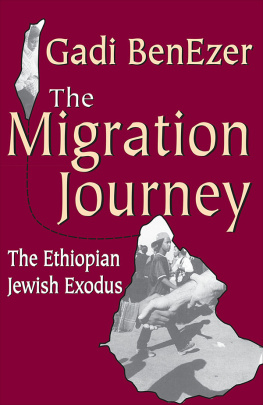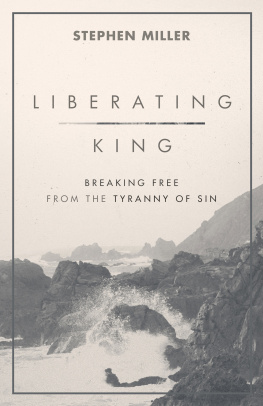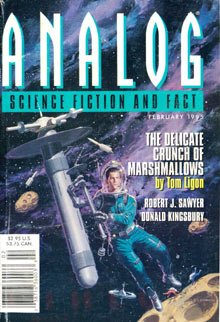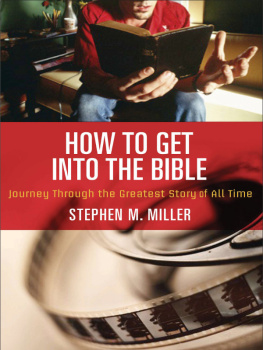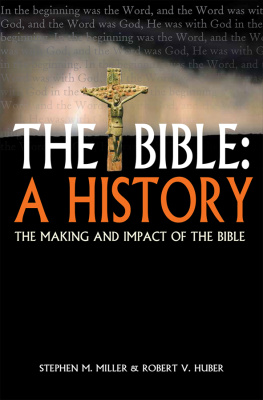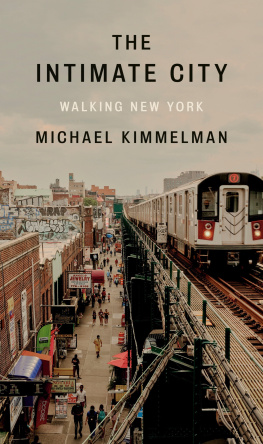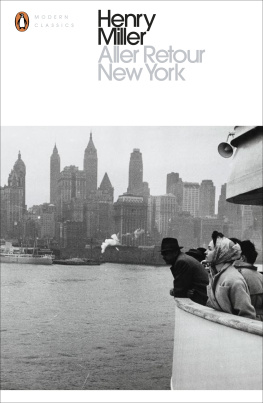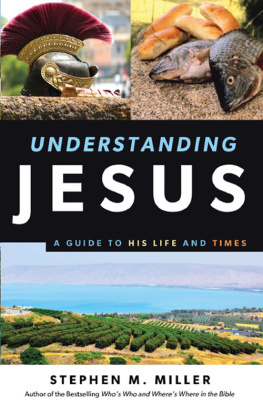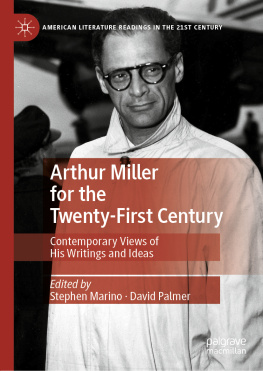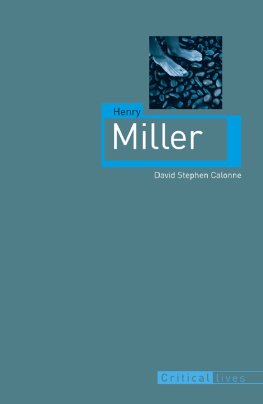Copyright 2015 Fordham University Press
All rights reserved. No part of this publication may be reproduced, stored in a retrieval system, or transmitted in any form or by any meanselectronic, mechanical, photocopy, recording, or any otherexcept for brief quotations in printed reviews, without the prior permission of the publisher.
Fordham University Press has no responsibility for the persistence or accuracy of URLs for external or third-party Internet websites referred to in this publication and does not guarantee that any content on such websites is, or will remain, accurate or appropriate.
Fordham University Press also publishes its books in a variety of electronic formats. Some content that appears in print may not be available in electronic books.
Visit us online at www.fordhampress.com.
Library of Congress Cataloging-in-Publication Data is available from the publisher.
Printed in the United States of America
17 16 15 5 4 3 2 1
First edition
In memory of my grandparents Meyer and Rose Groper, who came to New York from Poland and Romania around the turn of the twentieth century
Manhattans streets I saunterd pondering
WALT WHITMAN
Many novelists, poets, and essayists have liked to walk in New York. What I really like to do is wander aimlessly in the city, writes Joseph Mitchell in an unfinished memoir. I like to walk the streets by day and by night. Mitchell, who died in 1996, wrote essays about the people he met on his walks, from fishermen and bartenders to gypsies and eccentric writers. In New York, Luminous, Andr Aciman writes that sometimes on impulse he takes a long walk. Writing about one such walk, Aciman hopes to draw something new from the city, though I dont know what it is yet.
Many people who are not writers, of course, have liked to walk in New York. In articles about Americas most walkable cities, New York is often at the top of the list. My favorite thing about Manhattan is walking everywhere, the comedian Mike Birbiglia told a New York Times interviewer. New York offers a wide variety of walking tours. Jonathan R. Wynn, who has written a study of tour guides in New York, reckons the city has 1,780 licensed walking tour guides.
There are innumerable books about walking tours in New York. Many are idiosyncratic tours. Empire City (2002), an anthology of writing about New York, includes an essay by Lee Stringer, Down and Out and Up Again: Walking Freestyle Through the Upper East Side and Sleeping Rough in Central Park. It is from his book Time Out Book of New York Walks , which describes twenty-three walks one can take in the city. Many tour books focus on a writer or painter who lived in New Yorkfor example, Andy Warhols New York City: Four Walks, Uptown to Downtown. On the Internet, I found a tour called Ghost Doctors Ghost Tours of New York.
This book is in some ways a verbal walking tour of New York. The city is seen through the eyes of several British writers and twelve American writers: Walt Whitman, Herman Melville, William Dean Howells, Jacob Riis, Henry James, Stephen Crane, Theodore Dreiser, James Weldon Johnson, Alfred Kazin, Elizabeth Hardwick, Colson Whitehead, and Teju Cole. Their New York is mainly Manhattan. Only Whitman and Kazin write about walks in other boroughs, such as Brooklyn and Queens.
Many observers talk about the pleasures of walking in New York, but the writers I discuss often were irritated and disturbed by what they saw on their walks. Howells disliked walking in a city that was crowded, dirty, noisy, and ugly. Nevertheless, Howells continued to take long walks in New York, a city that fascinated him, even though he loathed it at times.
Some American writers have said that New York overwhelms the imagination and numbs the mind. Returning to New York after an absence of two decades, Henry James was agreeably baffled by the city. In his journals, Alfred Kazin asks, O New York, New York, carousel and carnival of the too-rich, busy, full life, how can one ever do justice to your insane human fullness? Writing about his walks around Manhattans waterfront, Phillip Lopate confesses, my head grew dizzy from absorbing impressions. And in Paul Austers City of Glass (1985), Quinn, the main character, is bewildered when he walks in New York. New York was an inexhaustible space, a labyrinth of endless steps, and no matter how far he walked, no matter how well he came to know its neighborhoods and streets, it always left him with the feeling of being lost.
If New York has been described as mentally numbing, even disorienting, it has also been described as something special, even magical. In 1807, Washington Irving wrote that the antient [ sic ] and venerable city of Gotham [was] renowned and delectable, the best of all possible cities. In The Great Gatsby (1925), Nick Carraway, the first-person narrator, observes, The city seen from the Queensboro Bridge is always the city seen for the first time, in its first wild promise of all the mystery and the beauty in the world.
Joan Didion, who grew up in Sacramento, writes that New York was no mere city. It was instead an infinitely romantic notion, the mysterious nexus of all love and money and power, the shining and perishable dream itself. Didion moved to New York in 1956. In 1964, she left for Los Angeles, but she moved back to New York in 2005.
Some American writers have not been charmed by New York. I dont like the city better, the more I see it, but worse, Thoreau said. I am ashamed of my eyes that behold it. It is a thousand times meaner than I could have imagined. The pigs in the street are the most respectable part of the population. Thoreau did not like to walk in any city. When we walk, he says, we naturally go to the fields and woods. Many Americans would agree. There is a long-standing distrust of cities and of urban life in the United States, notes Ray Hutchinson, the editor of The Encyclopedia of Urban Studies .
Some American writers have disliked New York because of its large immigrant population. The novelist Hamlin Garland said that New York is too near London. It is no longer American. He added, I might speculate upon the influence of the Irish, and Jews and Italians upon New York and Boston. In Sinclair Lewiss novel Dodsworth (1929), the main character finds New Yorkers rude and overbearing. People running with suit-cases nicked his legs, small active Jews caromed into him a surf of sweaty undistinguishable people swept over him. Does he dislike New Yorkers in part because many of them are Jewish? At the time he was writing roughly one out of every four New Yorkers was Jewish. Toward the end of the novel, another character says: Oh, but New York Self-conscious playing at internationalism! Russian Jews in London clothes going to Italian restaurants with Greek waiters and African music! One hundred per cent mongrels! And never, day or night or dawn, any escape from the sound of the Elevated! New Yorkno.
Jean-Paul Sartre, who visited New York in 1946, hated it. In Manhattan: The Great American Desert, he says that as soon as he arrived he suffered from le mal de New York . According to Andy Martin, Sartre suffered stubbornly from a sense of disorientation. He was determined to dislike everything about capitalist America, where, he said, people are being treated as things. He preferred to get around New York by car.
On the way to Hollywood in January 1947, Evelyn Waugh stayed in New York for a few days. He wrote a friend that the skyscrapers were nothing but great booby boxes absolutely negligible in everything except bulk. He said hell was sitting through all eternity in a traffic block listening to the conversation of a New York taxi driver. Updike implies that New York is filled with lonely, delusional solipsists.





